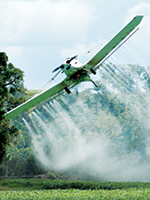A historic investigation
One goal of UC Davis’ Environmental Health Sciences Center is to help build a long-term future for environmental health research by supporting new investigators and ideas. A UC Davis MIND Institute study offers one aspirational example of impactful epidemiology.
Launched in 2003 with federal funding, the UC Davis designed- and-led CHARGE (Childhood Autism Risks from Genes and the Environment) study is considered the first major investigation of environmental factors and gene-environment interactions in the disorder, and possibly the largest in which autism cases were reliably confirmed using standardized tests.
A variety of researchers have mined the data for novel insights about ways that parents, physicians and officials can act to potentially reduce autism risk and severity.
Examples:
Missed diagnoses
Finding: Hispanic children often have undiagnosed developmental delays – and large numbers of both Hispanic and non-Hispanic children who first were thought to have developmental delay actually had autism. Study authors recommended increased public health efforts to improve awareness, especially among Hispanics, about indicators of developmental delay and autism.
Researchers: Virginia Chaidez with other UC Davis researchers.
Agricultural pesticides

Finding: Pregnant women living within a mile of farm fields treated with certain types of pesticides experienced a 60 percent higher risk of having a child with autism spectrum disorder. For one particular pesticide, which has already been banned for household use, the risk was three-fold higher. The large California-based study confirmed and extended earlier research, Hertz-Picciotto said.
Researchers: Lead author Janie Shelton with other UC Davis researchers.
Note: Approximately 200 million pounds of pesticide active ingredients are applied in California each year, mostly for production agriculture. With ag so critical to the state’s economy, Hertz-Picciotto said it falls upon elected officials to ensure that notifications are made to affected populations; that residential areas and schools are protected through health-based buffer zones; and that non-toxic alternatives are promoted.
Maternal diabetes, hypertension and obesity

Finding: Maternal metabolic conditions such as diabetes, hypertension, and obesity may be associated with neurodevelopmental problems in children, and were more common during the pregnancy in mothers of children who later developed autism spectrum disorder.
Researchers: Paula Krakowiak with other UC Davis and Vanderbilt researchers.
Note: More than a quarter of U.S. women of childbearing age were estimated to be obese in 2014.
Maternal nutrition
Finding: Women who consume the recommended daily dosage of folic acid the first month of pregnancy may have reduced risk of having a child with autism (in addition to other well-established benefits). Because it takes a while to build folate levels, women attempting to become pregnant should also use supplements.
Researchers: Lead author Rebecca Schmidt with UC Davis and USC researchers.
Note: Findings from the series of studies were the first to identify a concrete step women can take that may reduce the risk of having a child with autism. Results were confirmed in a prospective study involving 85,000 pregnancies in Norway, Hertz-Picciotto said.

Finding: Prenatal vitamins may be especially effective for genetically susceptible mothers and their children. For women with a particular high-risk gene who reported not taking prenatal vitamins, the estimated risk of having a child with autism ranged up to four times greater than for women who did report taking prenatal vitamins and had more favorable gene variants.
Researchers: Rebecca Schmidt with other UC Davis and USC researchers.
Note: The finding was a first identification of a specific gene-environment interaction in autism.
Finding: Mothers of children with autism are significantly less likely to report taking iron supplements before and during pregnancy. Low iron intake was associated with five-fold greater risk of autism if the mother was 35 or older or suffered from metabolic conditions such as obesity, hypertension or diabetes.
Researchers: Rebecca Schmidt with other UC Davis researchers.
Note: The research is the first to examine the relationship between maternal iron intake and having a child with autism spectrum disorder, authors said. Iron deficiency and anemia are the most common nutrient deficiency, especially during pregnancy, affecting 40 to 50 percent of women and their infants.
Housing near freeways
Finding: Children born to mothers living within about 1,000 feet of a freeway appeared to be at elevated risk for autism. Air pollution exposure during the first months of life had already been linked to cognitive developmental delay, and exposure during pregnancy to negative fetal effects.
Researchers: University of Southern California, Children’s Hospital Los Angeles and UC Davis MIND Institute.
Note: The study was among the first to link exposure to vehicular pollutants with autism risk, and Hertz-Picciotto pointed to nearly a dozen additional studies, the majority of which show similar findings. Although it’s also possible that persons living near freeways have other risk factors – making the magnitude of increased risk from air pollutants alone unclear – the benefits of avoiding dirty air from any source extend to a variety of health conditions, she said.


